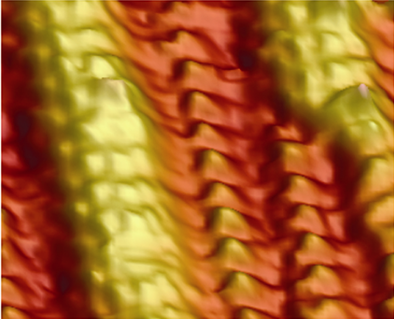Groovy nanowires
Nanowires—atomic chains one or a few atoms thick—are excellent candidates for nanoelectronics and a host of other applications, but first the fabrication process for making them must be reliable and reproducible. The growth of a nanowire on a substrate is highly sensitive to the chemistry of the elements involved, with different growth materials yielding different types of nanowires and in some cases no wire at all. Overcoming these effects would yield better control over the nanowire formation process.
In an article appearing in Physical Review Letters, Xiaodong Ma and colleagues at the Max-Planck-Institut in Halle, Germany, and collaborators elsewhere in Germany and in Japan have used Molecular Beam Epitaxy to grow iron, palladium, and gold nanowires on a corrugated molecular network of Cu3N on the (110) surface of copper. The Cu3N network guides the occupation of atoms on the copper surface, creating nanowires of identical structure in the grooves of the network. The resultant nanowires have uniform width, height, and orientation, regardless of which elements the group uses. The nanowires form in the grooves of the network. Because the Fe atom occupation is asymmetric at the crests, the nanowires exhibit a minimum separation. – Daniel Ucko





